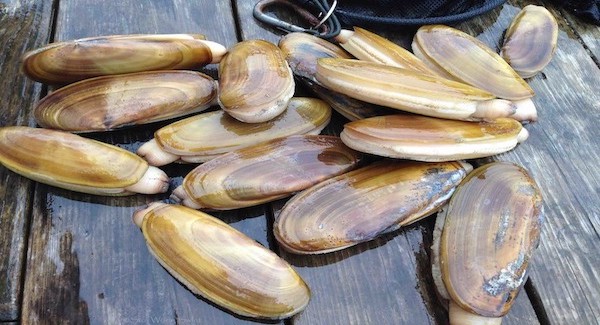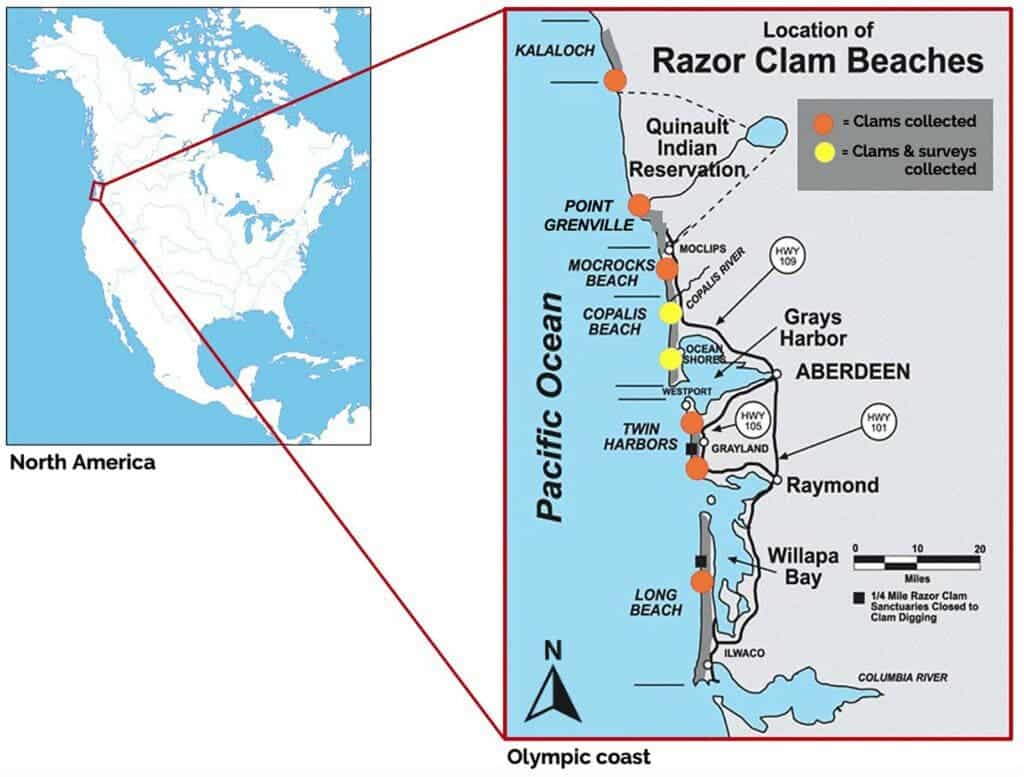
Ate Any Clams Recently? You’ve Might Have Also Had a Side of Microplastics
FERMIN KOOP
Scientists found microplastics in razor clams from the coast of Washington ...
Whether we realize it or not, microplastics are creeping into every place and organism in the world. These very small pieces of plastic are all over the place, with scientists finding them even in the most remote regions of the world. The most recent example are razor clams in the sparsely populated coast of Washington.
Millions of tons of plastic enter marine ecosystems every year, and quantities are expected to increase in the coming years. Over time, plastic items in the ocean can break down into smaller pieces, known as microplastics. These can be the size of a rice grain or even smaller, making it easy to be ingested by all sorts of sea creature — including one that doesn’t move.
Researchers from Portland State University in the US looked at the concentration of microplastic in razor clams collected from eight beaches in the Olympic National Park in Washington, after surveying clam harvesters. Then, they estimated the annual microplastic exposure of those eating them.
Plastic is everywhere
The razor clam ( Siliqua patula ) is found on Pacific beaches, on the western coast of North America, from Alaska to southern California. In the State of Washington, razor clams rely on the rich coastal waters to settle and grow, and they’re fortunate enough to not be around too many settlements. They are co-managed by the Department of Fish and Wildlife and by tribal governments living in the area.
The species attracts thousands of visitors to the Olympic Coast’s shores annually, as they try their luck at clamming during one or more recreational fishery openers. The recreational fishery injects what are usually sleepy coastal towns with visitors, filling hotels and restaurants and bringing millions of dollars to the economy.
During the study, the researchers found 799 suspected microplastics in 138 clam samples, 99% of which were microfibers. Each clam had seven pieces of plastic each on average. Those obtained from the Kalaloch Beach, the northernmost site, had significantly more microplastics than clams from the other seven sites.

The researchers didn’t investigate the reasons behind one location having more microplastics than the others, but Britta Baechler, the study’s lead author, said there are no significant differences in land cover types between Kalaloch and the other sites. However, Kalaloch is the closest in the proximity of all sites to the Seattle metropolitan area.
Baechler and her team compared whole clams (minimally processed as if being consumed by an animal predator) and cleaned clams, gutted, cleaned of sand debris and grit, prepared as if being eaten by a person. They found that in cleaned clams the number of microplastics was reduced by half, but was still present.
This is some consolation for people, as 88% of the 107 respondents to the survey done by the researchers said they clean clams before eating them. But it’s bad news for ocean predators, who eat the clams without cleaning them — and subsequently, for people who would eat these predators. This creates a chain of microplastics from the clams to other marine organisms.
The survey allowed the researchers to estimate the average amount of clams eaten per meal and the number of meals with clams eaten every year. They combined this data with the average number of microplastics per clam and estimated the number of microplastics that clam consumers were exposed to per year.
Those that clean their claims before eating them consume between 60 and 3,070 microplastics per year, while those who eat them whole without removing the guts, gills, and other organs consume between 120 and 6,020 microplastics a year. Still, the impact of this on human health isn’t clear yet.
“Our estimates of microplastic exposure from this single seafood item are, for context, far lower than what we likely take in from inhalation, drinking bottled water and other sources, but no amount of plastic in our marine species or seafood items is desirable,” Bachler, a member of Ocean Conservancy, said in a statement.
The presence of microplastics in Washington’s coastal environment and in the food webs raises concern about the potential for ecological harm to Pacific razor clams, their predators, and innumerable other marine species, the researchers said. They urged to address the transmission of microplastics to the marine environment.
Still, this is an enormous task. A study from earlier this year the world’s seafloor is filled with 14 million tons of microplastics, broken down from the masses of rubbish entering the oceans every year. This was 25 times greater than previous estimations from localized studies around the world.
The study was published in the journal Frontiers in Marine Science.
